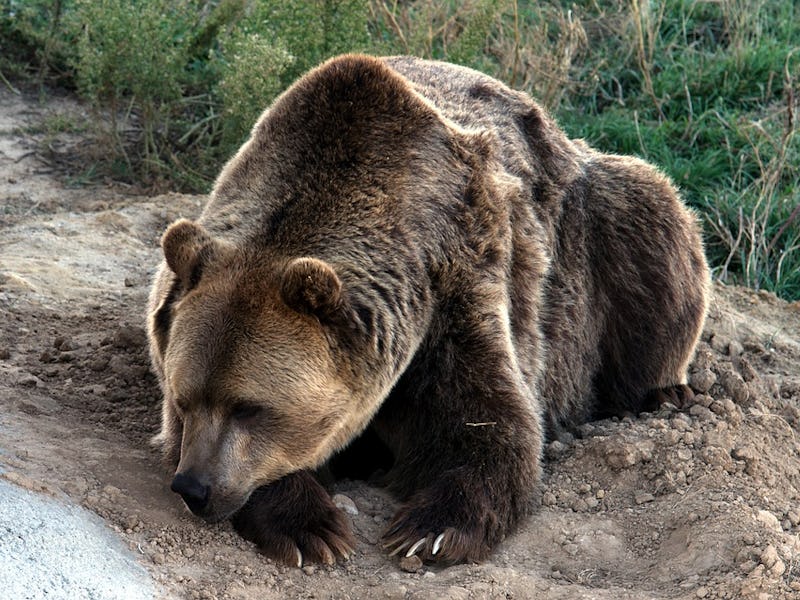Grizzly Bears Spared From Government-Authorized Hunt for at Least 14 Days
Grizzly populations have recovered, but does that mean they should be hunted?

A federal judge has temporarily blocked the opening of the first grizzly bear hunts around Yellowstone National Park in more than 40 years.
U.S. District Judge Dana Christensen’s order came just two days before hunting season was scheduled to start in Idaho and Wyoming. Though the order will only remain in effect for 14 days, it is just the beginning of a battle over whether officials were right to remove the animal’s endangered species protections in the first place. In 2017, Interior Secretary Ryan Zincke officially delisted Yellowstone grizzlies, citing data showing that their populations had increased to levels that no longer warranted protection.
“We’re thrilled,” said Mike Garrity, the executive director for plaintiff Alliance for the Wild Rockies, in an interview with the Associated Press of Christensen’s ruling. “Now the judge has time to rule without grizzly bears being killed starting Saturday morning.”
Grizzly populations have increased since 1975, but many argue their current numbers don't warrant delisting.
Historically, grizzly bears numbered around 50,000 and roamed most of North America. Widespread hunting and trapping caused their populations to decline drastically in the 19th and early 20th centuries, and human development limited their range to a small area in and around Yellowstone. There were just 136 bears isolated in the region when the U.S. Fish and Wildlife Services listed the animals as “threatened” under the Endangered Species Act in 1975. (A population of around 12,000 grizzlies left in Alaska was considered a distinct group.)
By 2017, conservation efforts had helped the number of Yellowstone bears bounce back to around 700. The number was important, because federal protections could be withdrawn if the population was “self sustaining.” In other words, if enough baby bears were born each year to offset the deaths, management of the animals could be passed on to states. And by doing so, Interior Secretary Ryan Zinke opened the doors to hunting grizzlies in the states where they live. Idaho and Wyoming allowed up to 22 bears to be killed each year. Before Christenen announced his temporary ban, the first hunting season was all set to start on September 1, with a second one starting September 15.
Clearly, not everyone agrees that the grizzly is out of the woods yet. Wildlife advocates, including legendary environmentalist Jane Goodall, and Native American tribes argue that the bears still face threats to their survival and can’t withstand too much killing. Bears have a notoriously slow birth rate,so their population may need more time to fully recover. Furthermore, invasive lake trout has also crowded out the native trout species that bears eat, and insect infestation and rising temperatures have decreased the number of whitebark pine trees that provide seeds the bears rely on for nutrition just before hibernation. Moreover, attacks on livestock and humans already force wildlife officials to euthanize several bears each year.
In July, officials in Montana also decided against allowing a grizzly hunt.
The people of Idaho, Montana, and Wyoming are not willing to tolerate bears roaming out of the park, though. The NRA and hunting group Safari Club International say that killing a limited number of bears would be a benefit to public safety. In a 2017 interview with the Chicago Tribune, Gardiner, Montana outfitter Edwin Johnson said: “They need to be hunted so that they fear the scent of humans, rather than following it as they do now,”
It can’t be denied that the Yellowstone grizzly revival since 1975 is actually a huge conservation win, especially compared to other species that are still in serious need of federal protection. Still, the question of whether to delist grizzlies remains contentious. In fact, it has been raised several times in the past: They were even removed from the endangered species list in 2007, but that decision was overturned in court.
In July, Montana wildlife officials also decided against holding a grizzly hunt this year. It seems like Idaho and Wyoming will have to reconsider their hunting permits soon too.